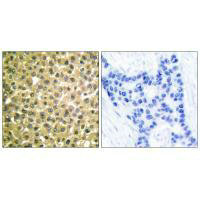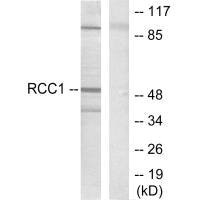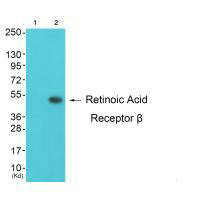
Immunohistochemical analysis of paraffin-embedded human breast carcinoma tissue using Retinoic Acid Receptor beta antibody.
RARB Antibody
CSB-PA127878
ApplicationsWestern Blot, ELISA, ImmunoHistoChemistry
Product group Antibodies
ReactivityHuman, Mouse
TargetRARB
Overview
- SupplierCusabio
- Product NameRARB Antibody
- Delivery Days Customer20
- ApplicationsWestern Blot, ELISA, ImmunoHistoChemistry
- CertificationResearch Use Only
- ClonalityPolyclonal
- ConjugateUnconjugated
- Gene ID5915
- Target nameRARB
- Target descriptionretinoic acid receptor beta
- Target synonymsHAP; HBV-activated protein; hepatitis B virus activated protein; MCOPS12; NR1B2; nuclear receptor subfamily 1 group B member 2; RAR-beta; RARbeta1; RAR-epsilon; retinoic acid receptor beta; retinoic acid receptor, beta polypeptide; RRB2
- HostRabbit
- IsotypeIgG
- Protein IDP10826
- Protein NameRetinoic acid receptor beta
- Scientific DescriptionReceptor for retinoic acid. Retinoic acid receptors bind as heterodimers to their target response elements in response to their ligands, all-trans or 9-cis retinoic acid, and regulate gene expression in various biological processes. The RXR/RAR heterodimers bind to the retinoic acid response elements (RARE) composed of tandem 5-AGGTCA-3 sites known as DR1-DR5. In the absence or presence of hormone ligand, acts mainly as an activator of gene expression due to weak binding to corepressors. In concert with RARG, required for skeletal growth, matrix homeostasis and growth plate function. Reuben Lotan, N. Engl. J. Med., May 1995; 332: 1405 - 1411. Andrew Yen, Mol. Pharmacol., Dec 2004; 66: 1727 - 1737. K Swisshelm, Cell Growth Differ., Feb 1994; 5: 133. F Aoudjit, Cell Growth Differ., May 1995; 6: 515.
- ReactivityHuman, Mouse
- Storage Instruction-20°C or -80°C
- UNSPSC12352203


